Variations between studies due to fish species or fishmeal protein substitution rates
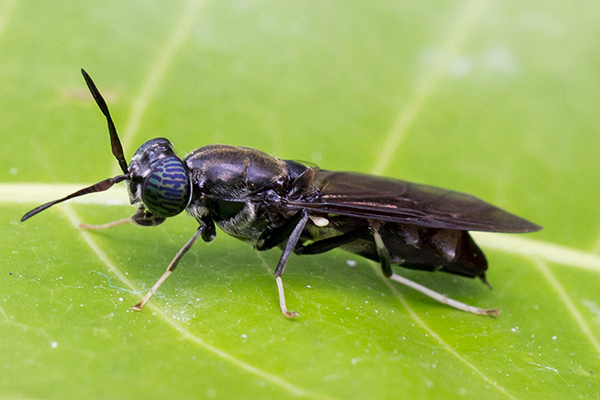
The search for adequate substitutes to fishmeal has attracted attention to insects as one of the future protein sources for animal production, principally thanks to their attributes both biological (i.e., fast reproductive and developmental cycle or ability to feed on organic residues for several species) and nutritional (i.e., high protein and fat content rich in essential fatty acids coupled with a high feed conversion efficiency).
The most studied insect species is the Black Soldier Fly (Hermetia illucens). Several studies have attempted to rear fish on diets based on BSF meals (BSFM) with mixed results. These studies analyzed several parameters in various fish species in response to partial or total substitution of fishmeal (FM) by BSFM. Literature reviews have well-identified encouraging results of insect dietary inclusion on fishes’ growth and nutritional quality. However, these classical synthesis methods based on a qualitative approach include significant subjectivity. Moreover, the sources of heterogeneity related to the experimental conditions between studies are multiple and are rarely considered.
The meta-analysis of data resulting from a nearly exhaustive list of studies is an aggregative method of knowledge synthesis allowing an inferential approach. It is performed on quantitative data derived from different studies to provide an overall estimate of the effectiveness of an intervention and a measure of its accuracy, and is generally achieved by a Bayesian approach [Bayesian probability is an interpretation of the concept of probability, in which, instead of frequency or propensity of some phenomenon, probability is interpreted as reasonable expectation representing a state of knowledge or as quantification of a personal belief].
This article – adapted and summarized from the original publication (Gougbedji, A. et al. 2022. Can Insect Meal Replace Fishmeal? A Meta-Analysis of the Effects of Black Soldier Fly on Fish Growth Performances and Nutritional Values. Animals 2022, 12(13), 1700) –presents the results of a study to evaluate the effect of the substitution of fishmeal with black soldier fly meal on fish growth and nutritional value through a meta-analysis.
World’s largest fly factory attracting investors eyeing aquafeed expansion
Study setup
To build the experimental meta-database, systematic bibliographic research was conducted in June 2022 in the search engine of the University of Liege (ULiège library) in Belgium. This library includes several other search engines: Google Scholar, Isidore, Lens, Microsoft Academic, PubMed, Scopus, Scribe and Unicat. A query formulated from keywords related to the research topic has been introduced. The syntax of the query is as follows: (“Black soldier fly”) OR (“Hermetia illucens”) AND Fish AND Substitution OR Replacement.
Once the query results were obtained, the facets (type of document, subject) of the search engine were used to reduce, step by step, the number of proposed answers to limit the noise. Scientific articles were retained after eliminating conference proceedings, patents and press articles. Articles dealing with the incorporation of black soldier fly meal in poultry feed and ornamental fish such as zebrafish were excluded. The next level of sorting was to keep articles related to the use of black soldier fly meal in fish feed based on the titles and abstracts.
The final selection was made based on the simultaneous presence in the data of studies describing the growth, nutritional composition of black soldier fly meal, fish diets and fish reared with black soldier fly meal. The water temperature of the rearing environments was also to be provided. For detailed information on data extraction and analysis, refer to the original publication.
Results and discussion
Studies dealing with fishmeal substitution by black soldier fly meal have increased significantly in recent years, and our results should not be interpreted beyond the scope we utilize them for: “the analysis of BSF inclusion in fish diets for the specific response variables selected ̶ thermal growth coefficient, TGC [a growth metric that standardizes growth by considering the effect of temperature]; feed conversion ratio, FCR; protein percent, Prot; and lipid percent, Lip. The drop in the number of studies observed in 2022 is temporary because the meta-analysis carried out only occurs in the middle of the year. The data structure of this meta-analysis shows a dominance of studies conducted in Europe, and this can be explained by establishing a correlation with the species of fish studied.
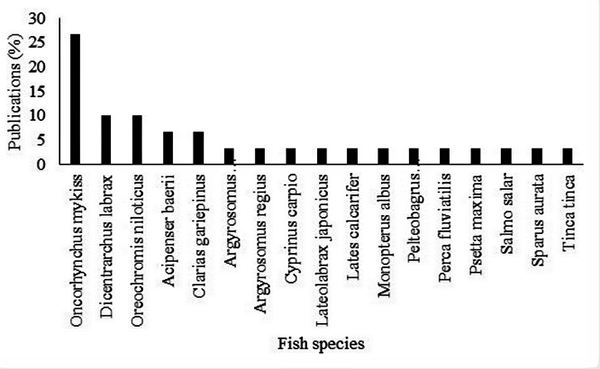
We analyzed the effect of fishmeal substitution with black soldier fly meal on different fish species. Understanding the biological behavior of fish in response to a dietary change requires the integration of several growth and nutritional parameters. Four parameters were studied in this meta-analysis: TGC, FCR, protein and lipid levels in the whole body of fish. Negative asymmetries were found in the meta-analysis except for FCR, suggesting publication bias. This kind of bias generally occurs because research publications depend on the statistical significance of the results or on the direction some researchers give them. Analysis of the specific sources of the observed variability showed that the selected effects explained more than 43.81 percent of the heterogeneity between studies. Other effects not considered may also include variations.
The main difficulty of a meta-analysis on fishes lies in the comparison of parameters affected by the intrinsic traits of each species. Thus, the diversity of fish makes this analysis arduous. The use of TGC as a measure of growth could limit interpretation bias. The use of the protein substitution level instead of the black soldier fly meal inclusion level could enhance the conclusions of this study.
Overall, the results of this analysis suggest that high substitution levels had no effect on fish growth. This trend is in contrast to the findings of other researchers that suggest a decline of fish growth when black soldier fly meal inclusion rates exceed 29 ± 3 percent in the diet. However, the SGR used in that study as a parameter to measure growth is likely to induce an interpretation bias since it concerns different species and different stages of development. Other researchers have reported a linear decrease in SGR of fish species with an increase in BSF level in the fish diet.
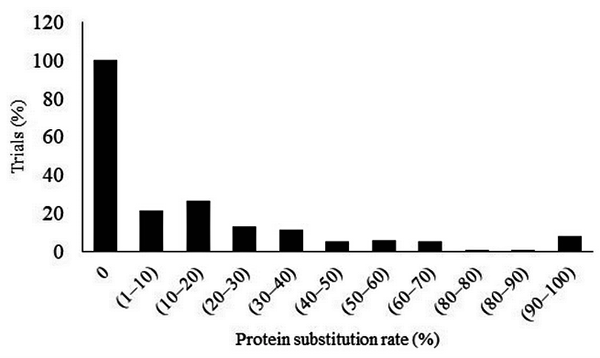
The effect of feeding habits was hidden in the analysis performed. Feeds for fish are usually formulated from a combination of plant and animal resources in an attempt to satisfy their nutritional requirements. Thus, the expression of their natural feeding instincts may be greatly restricted. Our results provide a more optimistic view of the incorporation of BSF into fish diets than previous studies, but the appropriate levels will also depend on a combination of several factors such as other abiotic parameters (dissolved oxygen, salinity, pH, dissolved solids levels others), fish species and nutritional details of both larvae and fish.
Other factors may also be important in the response of the fish. The fatty acid compositions of the BSF could substantially impact fish growth and fish quality. BSF are naturally rich in saturated fatty acids, which limit their inclusion in the fish feed. In most of the studies used in this meta-analysis, the insect meals used were not modulated to improve fatty acid quality.
Several studies have already shown that the quality of BSF prepupae is greatly improved when their diets are nutritionally enriched. Another factor that may influence digestibility and thus growth performance in fish is the high proportion of chitin in BSF prepupae.
All the trials in this study focused on the biological aspects of the use of BSF in fish feed, but the economics of fish production from BSF need to be assessed to estimate the profitability of this approach.
Perspectives
This study reviewed the literature on substituting fishmeal with black soldier fly meal in fish diets. The quantitative method used allows for more accurate preliminary conclusions than previous studies. The issue of total substitution of fishmeal by black soldier fly meal is not completely resolved; however, it is conceivable that high levels of substitution could be achieved without necessarily risking a negative impact on fish. In addition, economic considerations would allow future research to be directed towards ways to optimize the profitability of fish fed with black soldier fly meal.
Now that you've reached the end of the article ...
… please consider supporting GSA’s mission to advance responsible seafood practices through education, advocacy and third-party assurances. The Advocate aims to document the evolution of responsible seafood practices and share the expansive knowledge of our vast network of contributors.
By becoming a Global Seafood Alliance member, you’re ensuring that all of the pre-competitive work we do through member benefits, resources and events can continue. Individual membership costs just $50 a year.
Not a GSA member? Join us.
Authors
-
Armel Gougbedji
Corresponding author and Ph.D. student
Unit of Functional and Evolutionary Entomology, Gembloux Agro-Bio Tech, University of Liege, 5030 Gembloux, Belgium; and Laboratory of Hydrobiology and Aquaculture, Faculty of Agronomics Sciences, University of Abomey-Calavi, Cotonou 01 BP 526, Benin[101,98,46,101,103,101,105,108,117,64,105,106,100,101,98,103,117,111,103,109]
-
Johann Detilleux, Ph.D.
Unit of Fundamental and Applied Research for Animals and Health, University of Liege, 4000 Liege, Belgium
-
Dr. Philippe A. Lalèyè
Laboratory of Hydrobiology and Aquaculture, Faculty of Agronomics Sciences, University of Abomey-Calavi, Cotonou 01 BP 526, Benin
-
Frédéric Francis, Ph.D.
Unit of Functional and Evolutionary Entomology, Gembloux Agro-Bio Tech, University of Liege, 5030 Gembloux, Belgium
-
Rudy Caparros Megido, Ph.D.
Unit of Functional and Evolutionary Entomology, Gembloux Agro-Bio Tech, University of Liege, 5030 Gembloux, Belgium
Tagged With
Related Posts

Health & Welfare
Effect of full-fat, black soldier fly meal in juvenile Siberian sturgeon diets
Assessment of the effects of black soldier fly meal in juvenile Siberian sturgeon diets shows low feed acceptance at high levels.

Aquafeeds
Aquafeed moonshots at the F3 ‘talent show’
At the F3 (fish-free feed) Companies Got Talent event in Burlingame, Calif., last week, alternative (non-marine) aquafeed ingredient companies spoke of decoupling aquaculture from fishmeal and fish oil in their quest for greater sustainability.
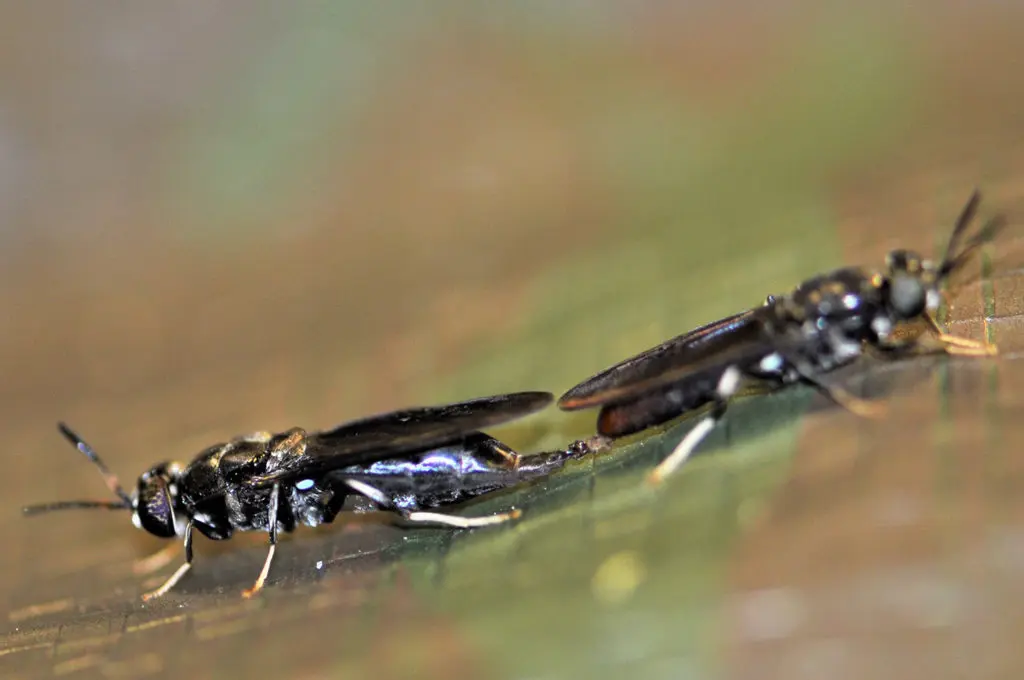
Aquafeeds
Black soldier fly larval production in a stacked production system
Study describes development and evaluation of an “all-in-one” stacked system for indoor production of black soldier fly larvae.
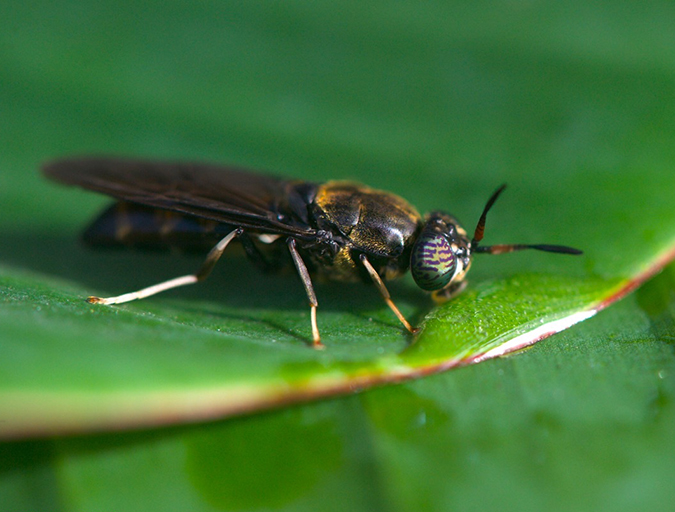
Aquafeeds
Buggin’ out: Tapping the potential of insect meal in aquaculture
Black soldier flies are gaining interest as a leading alternative ingredient in aquafeeds. But will the “ick” factor be a turn-off? Advocate contributor Clare Leschin-Hoar investigates.



